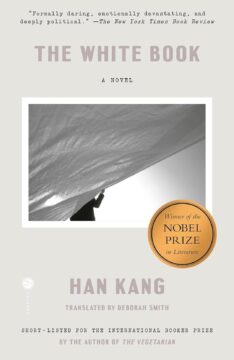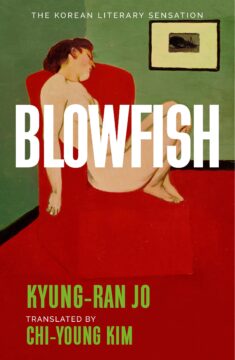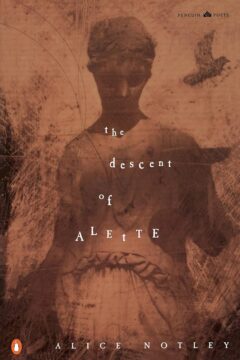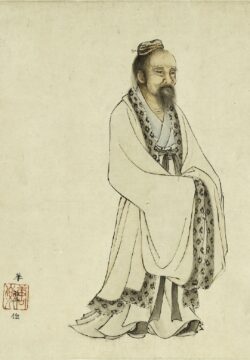Sajad Hameed and Rehan Qayoom Mir at Jacobin:

The bookshops in Lal Chowk, in Srinagar — the summer capital of India-administered Kashmir — had been, as usual, places of quiet and repose. But on August 7, police officers started raiding stores, pulling titles from shelves and questioning sellers. By then, the news had already spread online: the Jammu and Kashmir administration had banned twenty-five books. In the hours and days that followed, booksellers scrambled to check their inventories.
These books included works by Booker Prize winner Arundhati Roy, along with writers like Sumantra Bose and historian Hafsa Kanjwal. For many, the ban was more than an administrative order; it was another sign of how the Indian government tightens its hold on ideas and words — especially in Kashmir, where the Narendra Modi–led BJP government controls Kashmir directly through Lieutenant Governor Manoj Sinha.
The stated purpose of the raids, according to police, was “to identify, seize, and forfeit any literature that propagates or systematically disseminates false narratives, promotes secessionist ideologies,” or “otherwise poses a threat to the Sovereignty and Unity of India.”
Ironically, the ban only increased interest in the books.
More here.
Enjoying the content on 3QD? Help keep us going by donating now.

 “The tree which moves some to tears of joy is in the eyes of others only a green thing which stands in the way,” William Blake wrote in
“The tree which moves some to tears of joy is in the eyes of others only a green thing which stands in the way,” William Blake wrote in  In his 2005 book, Democracy Matters, Cornel West calls James Baldwin “this black American Socrates.” I’ve always liked this description of Baldwin. He was a man, after all, who—like Socrates—implored us to “drive to the heart of every answer and expose the question that it hides.” But there are also ways in which the comparison fails. Socrates, at least as he is presented to us by Plato, seems almost superhuman. He can drink all night with his interlocutors, and when the whole lot of them are passed out or gone away, he can walk off, seemingly unfazed. When the incredibly gorgeous and hungry Alcibiades tries to seduce him, Socrates has the iron will to resist. Whatever the truth of these stories, they describe a Socrates who does not fit well with Baldwin, someone who was all too human.
In his 2005 book, Democracy Matters, Cornel West calls James Baldwin “this black American Socrates.” I’ve always liked this description of Baldwin. He was a man, after all, who—like Socrates—implored us to “drive to the heart of every answer and expose the question that it hides.” But there are also ways in which the comparison fails. Socrates, at least as he is presented to us by Plato, seems almost superhuman. He can drink all night with his interlocutors, and when the whole lot of them are passed out or gone away, he can walk off, seemingly unfazed. When the incredibly gorgeous and hungry Alcibiades tries to seduce him, Socrates has the iron will to resist. Whatever the truth of these stories, they describe a Socrates who does not fit well with Baldwin, someone who was all too human. According to Einstein’s theory of relativity, time passes more slowly in space. As a result, astronauts would experience a delay in aging. However, scientists found that space travel may have the opposite effect by
According to Einstein’s theory of relativity, time passes more slowly in space. As a result, astronauts would experience a delay in aging. However, scientists found that space travel may have the opposite effect by  SOUTH KOREAN WRITER Han Kang is perhaps best known for her 2007 novel The Vegetarian, a violent, evocative work that led to her 2024 Nobel Prize win. But hiding in plain sight has been her 2016 masterpiece The White Book, whose English translation by Deborah Smith was recently reissued in paperback by Hogarth. An experimental, autobiographical novel, The White Book contains profound insights about the nature of grief and color that—like so many overlooked novels—are devilishly difficult to describe. But by digging into the novel’s poetic logic with an ear tuned to sound and silence, we can begin to tease it out.
SOUTH KOREAN WRITER Han Kang is perhaps best known for her 2007 novel The Vegetarian, a violent, evocative work that led to her 2024 Nobel Prize win. But hiding in plain sight has been her 2016 masterpiece The White Book, whose English translation by Deborah Smith was recently reissued in paperback by Hogarth. An experimental, autobiographical novel, The White Book contains profound insights about the nature of grief and color that—like so many overlooked novels—are devilishly difficult to describe. But by digging into the novel’s poetic logic with an ear tuned to sound and silence, we can begin to tease it out. Seventy-five years after the outbreak
Seventy-five years after the outbreak My desire to live in a city was not simply one of seeking like-minded people (other writers and artists, perhaps) and creating a smaller environmental footprint. I was also running from the lifeless suburbs of my childhood and what lay just beyond them: the dreaded sprawl.
My desire to live in a city was not simply one of seeking like-minded people (other writers and artists, perhaps) and creating a smaller environmental footprint. I was also running from the lifeless suburbs of my childhood and what lay just beyond them: the dreaded sprawl. The latest ambition of artificial intelligence research — particularly within the labs seeking “artificial general intelligence,” or AGI — is something called a world model: a representation of the environment that an AI carries around inside itself like a computational snow globe. The AI system can use this simplified representation to evaluate predictions and decisions before applying them to its real-world tasks. The deep learning luminaries Yann LeCun (of Meta), Demis Hassabis (of Google DeepMind) and Yoshua Bengio (of Mila, the Quebec Artificial Intelligence Institute) all believe world models are essential for building AI systems that are truly
The latest ambition of artificial intelligence research — particularly within the labs seeking “artificial general intelligence,” or AGI — is something called a world model: a representation of the environment that an AI carries around inside itself like a computational snow globe. The AI system can use this simplified representation to evaluate predictions and decisions before applying them to its real-world tasks. The deep learning luminaries Yann LeCun (of Meta), Demis Hassabis (of Google DeepMind) and Yoshua Bengio (of Mila, the Quebec Artificial Intelligence Institute) all believe world models are essential for building AI systems that are truly  We have each had the honor and privilege of serving as director of the Centers for Disease Control and Prevention, either in a permanent or an acting capacity, dating back to 1977. Collectively, we spent more than 100 years working at the C.D.C., the world’s pre-eminent public health agency. We served under multiple Republican and Democratic administrations — every president from Jimmy Carter to Donald Trump — alongside thousands of dedicated staff members who shared our commitment to saving lives and improving health.
We have each had the honor and privilege of serving as director of the Centers for Disease Control and Prevention, either in a permanent or an acting capacity, dating back to 1977. Collectively, we spent more than 100 years working at the C.D.C., the world’s pre-eminent public health agency. We served under multiple Republican and Democratic administrations — every president from Jimmy Carter to Donald Trump — alongside thousands of dedicated staff members who shared our commitment to saving lives and improving health. Robert F. Kennedy Jr., the secretary of health and human services, is endangering the health of the American people now and into the future. He must resign. Mr. Kennedy and the rest of the Trump administration tell us, over and over, that they want to Make America Healthy Again. That’s a great slogan. I agree with it. The problem is that since coming into office President Trump and Mr. Kennedy have done exactly the opposite.
Robert F. Kennedy Jr., the secretary of health and human services, is endangering the health of the American people now and into the future. He must resign. Mr. Kennedy and the rest of the Trump administration tell us, over and over, that they want to Make America Healthy Again. That’s a great slogan. I agree with it. The problem is that since coming into office President Trump and Mr. Kennedy have done exactly the opposite. A common type of ant in Europe breaks a fundamental rule in biology: its queens can produce male offspring that are a whole different species. These queen Iberian harvester ants (Messor ibericus) are sexual parasites that rely on the sperm of males of the ant species Messor structor. They use this sperm to breed an army of robust worker ants, which are hybrids of the two species. Data now show that, in the absence of nearby M. structor colonies, M. ibericus queens can clone male M. structor ants by laying eggs that contain only M. structor DNA in their nuclei. The findings were published in Nature on 3 September
A common type of ant in Europe breaks a fundamental rule in biology: its queens can produce male offspring that are a whole different species. These queen Iberian harvester ants (Messor ibericus) are sexual parasites that rely on the sperm of males of the ant species Messor structor. They use this sperm to breed an army of robust worker ants, which are hybrids of the two species. Data now show that, in the absence of nearby M. structor colonies, M. ibericus queens can clone male M. structor ants by laying eggs that contain only M. structor DNA in their nuclei. The findings were published in Nature on 3 September A few days before she died, I asked Alice if she would make me a list of her favorite folk songs, the ones she’d sometimes sing while we worked together in her apartment. She emailed me from her hospital bed with the subject line “probably illegible” and a photo showing her open notebook with two pages of handwritten song titles. “Careless Love,” “Wild Mountain Thyme,” “What is the Soul of a Man,” “Shady Grove.” At the bottom of the image, she arranged two figurines—a blue-eyed owl and little R2-D2—to weigh down the pages. “Baby, Please Don’t Go,” “Down in the Valley,” “Spanish Johnny,” “In the Pines.” There are no musicians, just song titles—these are folk and blues songs, after all—all written in her lush cursive. “Shenandoah,” “Black Is the Color of My True Love’s Hair,” “The Water Is Wide,” “See That My Grave Is Kept Clean.” This will be the last thing she says to me.
A few days before she died, I asked Alice if she would make me a list of her favorite folk songs, the ones she’d sometimes sing while we worked together in her apartment. She emailed me from her hospital bed with the subject line “probably illegible” and a photo showing her open notebook with two pages of handwritten song titles. “Careless Love,” “Wild Mountain Thyme,” “What is the Soul of a Man,” “Shady Grove.” At the bottom of the image, she arranged two figurines—a blue-eyed owl and little R2-D2—to weigh down the pages. “Baby, Please Don’t Go,” “Down in the Valley,” “Spanish Johnny,” “In the Pines.” There are no musicians, just song titles—these are folk and blues songs, after all—all written in her lush cursive. “Shenandoah,” “Black Is the Color of My True Love’s Hair,” “The Water Is Wide,” “See That My Grave Is Kept Clean.” This will be the last thing she says to me. Zhuangzi’s view, as interpreted by Guo, is that when we seek a definite identity, we betray our true nature as fundamentally fluid and indeterminate. We end up pursuing some external model of definiteness. Even if the model is one of our own devising, it is external to our true indefinite nature. One story in the Zhuangzi tells of a welcoming and benevolent but faceless emperor, Hundun. Hundun has a face drilled into him by two other emperors who already have faces of their own. As a result, he dies. The story suggests that fixed identity always comes to us from the outside, from others who have already attached themselves to fixed identities and drive us to do the same, not usually by drills but rather by example. This peer-driven attachment to identity kills our fundamental nature, which is formless and fluid like Hundun (his name, 混沌, means something like ‘mixed-up chaos’, and each character contains the water radical signalling fluidity). Our true Hundun-nature is the capacity to take on many forms without being finally defined by any of them.
Zhuangzi’s view, as interpreted by Guo, is that when we seek a definite identity, we betray our true nature as fundamentally fluid and indeterminate. We end up pursuing some external model of definiteness. Even if the model is one of our own devising, it is external to our true indefinite nature. One story in the Zhuangzi tells of a welcoming and benevolent but faceless emperor, Hundun. Hundun has a face drilled into him by two other emperors who already have faces of their own. As a result, he dies. The story suggests that fixed identity always comes to us from the outside, from others who have already attached themselves to fixed identities and drive us to do the same, not usually by drills but rather by example. This peer-driven attachment to identity kills our fundamental nature, which is formless and fluid like Hundun (his name, 混沌, means something like ‘mixed-up chaos’, and each character contains the water radical signalling fluidity). Our true Hundun-nature is the capacity to take on many forms without being finally defined by any of them.